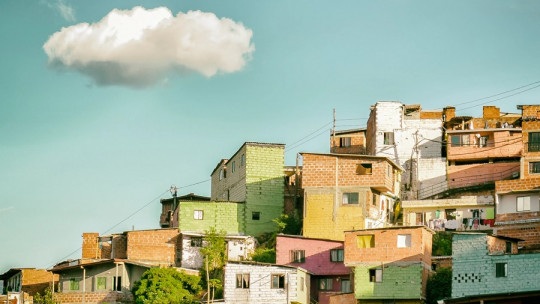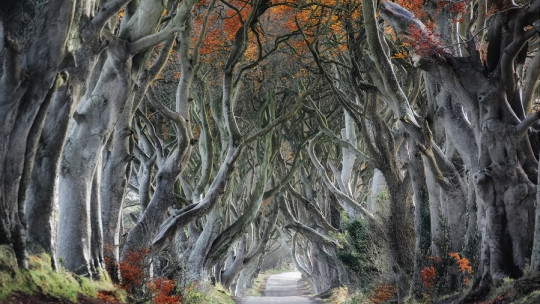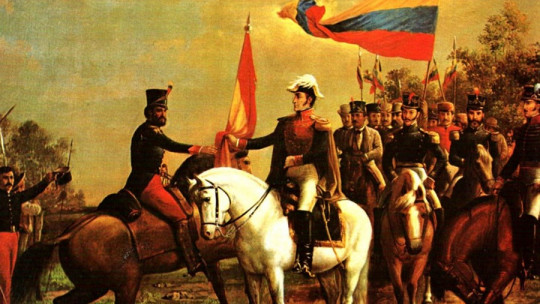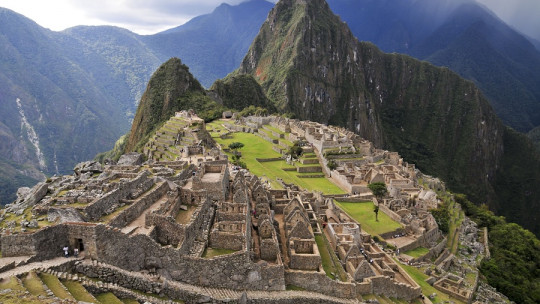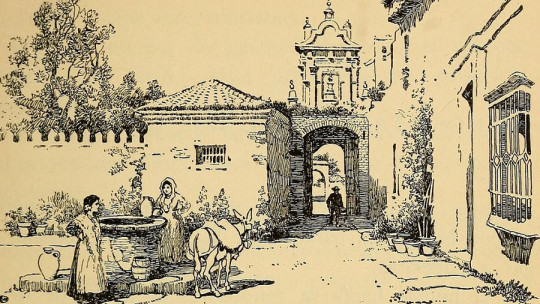Colombian legends with decades of history They mix the mystical with the historical, love with heartbreak, magic with tradition, the heroic and the supernatural. These are narratives rich in symbolic and historical content that, in addition to entertaining us, can help us learn about individual experiences, historical events, and cultural worldviews.
In the following article we will see 12 of the most popular legends of Colombia, in which A part of the popular culture and mythology of the South American country is shown
The cultural importance of the legends of Colombia
It would be a mistake to assume that Colombian legends are simply stories for children, or that they are just an accumulation of superstitions and other irrational beliefs that should be replaced by scientific knowledge and purely realistic narratives. This type of popular culture It brings us very important knowledge about the History and characteristics of Colombian society : tells us about the key elements of its symbolism, its religious references, its way of ethically and aesthetically representing themes of universal interest such as love or death, etc.
Therefore, people of all ages can benefit from stimulating their minds with these legends linked to one of the most diverse and multicultural countries in the world. Although today our education is not based on the oral transmission of legends, they are still very relevant, and it is a positive thing to pass them on from one generation to the next.
The most popular Colombian legends
Legends are stories that are transmitted orally or in writing from generation to generation. Likewise, they are a way of understanding popular ideas and everyday life: they tell stories about the past, explain natural or supernatural phenomena, talk about individual events, love relationships, religious, educational, political, heroic events, etc.
Each legend is specific to the specific region where it is told, so it is transmitted and transformed according to its cultural codes. Returning to the above, we review 10 popular legends from Colombia.
1. The mother of water
They say that in the Colombian rivers and springs it appears the ghost of a beautiful woman, whom they know as the Mother of Water, or the Mother of the River They say that her hair is golden, her skin is white and her eyes are big green. By day, and in view of the sun, its power is spiritual and healing.
At night, his face reflects fantasy. She attracts and seduces young people who, upon eye contact, fall into a state of hypnosis and madness. Some more fall into the depths of the spring and are never seen again. To escape the spell, the young people who survive must pray accompanied by adults. It is also said that the Mother of Water Ride through the crystalline lakes riding dolphins, fish and crocodiles

2. The pawsola
Similar to the stories of other legendary women in Latin America, such as La Llorona or La Sayona, “La Patasola” is the lost soul of a woman who lost her children due to love conflicts. She is known as “the single foot” because she walks with only one foot. Her hair is long and tangled, and she has big eyes and mouth.
They say that she was a woman who was married to a farmer with whom she had three children. One day, upon returning from work, the farmer found the woman at home with her boss, and in a fit of fury he cut off the latter’s head with a machete. The woman tried to escape from her, but the farmer managed to cut off one of her legs. As a result of this injury the woman soon died. The farmer set fire to the house and took his children far away. Since then, The lost soul of the Patasola returns to look for them
According to the specific region where it is told, the Patasola appears with enormous fangs, so it may be a species of vampire that, beyond having been a scorned woman, is a being that protects nature.
3. The footlight
According to this legend, there is a large burning ball made up of three torches, which take the shape of red tentacles and chases suspicious or ill-willed men, such as drunks, infidels, abusers, those who abandon their families, etc. They say that they also chases late-night travelers and may appear to reprimand bad behavior of children and grandchildren
The origin of the limelight is an old woman who was excessively permissive with her grandchildren. When she died, Saint Peter reprimanded her for having educated them in this way and, as punishment, gave her the form of three candle flames, as well as the commission to return to put things in order when necessary. One represented the body of the old woman, and the other two that of her grandchildren.
4. The shod mule
The inhabitants of Bogotá say that starting at midnight you can hear the galloping of a mule Shod because she is alone and saddled touring the city. It is said that a man named Don Álvaro enjoyed riding his mule, constantly changing course. He always ended up at a gambling house, where he ate and drank until late into the night. One day, while Don Álvaro was playing, his servant accompanied the mule to drink water from the river. The animal escaped to the gambling house where its owner was.
Surprised, Don Álvaro asked him to pick him up every night, and that’s how it happened. When Don Álvaro died, the mule spent the rest of his nights wandering through the city in search of his owner. They say that her grace returns to this day, which is why those who listen to her call her “the shod mule.”
5. The Witches of Burgama
In the town of Burgama, today called San Juan Crisóstomos de la Loma, they tell the legend of María Antonia Mandona, María Pérez, María de Mora, María del Carmen and Leonelda Hernández, who were accused of witchcraft and subjected to an inquisitorial process in the XVII century. They were known as The Witches of Burgama and lived on a mountain near the town, where They dedicated themselves to curing the sick and lovers
However, they were accused of having pacts with the devil, as well as wanting to turn the town into a large lagoon to turn the priest into an alligator, and the inhabitants into a group of toads. They were finally taken to prison and sentenced to the stake. But one of them, Leonelda, managed to escape with the help of the indigenous residents. Together, they not only freed the accused, but also killed the soldiers and the captain who had ordered her sentencing. From this moment, the place was known as Cerro de la Horca.
6. El Mohan
Legend has it that in the Colombian mountains and rocks there exists a great man with abundant hair, a beard, large eyes and long nails. Depending on the specific region where it is counted, man can have different characteristics and origins For example, it is said that he is a sorcerer who, anticipating the arrival of the Spanish in the 15th century, took refuge in the caves, where he played the guitar especially during the full moon.
In fact, many of the natural disasters in the area are attributed to him, which is why some people pay tribute to him as a sign of peace. Furthermore, Mohan constantly returned to the city, it is said that he persecuted young people and peasants, which is why he is terrifying to some people.
7. The Alligator Man
Legend has it that a fisherman named Saúl Montenegro had an obsession with looking at women who bathed naked on the Caribbean coast, specifically in the Magdalena River. He did not want to be discovered and reprimanded, so he decided to visit a local witch, who prepared a potion for him that would turn him into an alligator. So he could hide under the river and continue spying on the women. The same witch gave him an extra potion, which would allow him to return to human status whenever the fisherman wanted But obviously someone else would have to spray the latter while in alligator form.
He asked one of his friends for the favor, who, surprised by the transformation, poured the potion only on the fisherman’s head. Thus, he was transformed into a being that was half man, half alligator, and immediately aroused the terror of the women who visited the river. They did not return, and in desolation, the fisherman spent the rest of his days wandering along the river until he reached its mouth. Until now, fishermen who visit the area say they wait to meet the alligator man.
8. The Muelona
Also known as the Colmillona, it is a woman with long hair and big eyes with enormous teeth. They say that it comes from a woman called La Maga, who was dedicated to telling the future, liberating women and punishing men. When she died, her neighbors said they heard her inside her house swearing revenge against unfaithful, drunken and vicious men
Some people claim that his spirit appears on the edges of the trails, especially when evening falls. At first she looks like a seductive and attractive woman, so many men quickly approach her. However, they become terrified of her when she shows them her large teeth (similar to a horse’s), and sometimes she even crushes them as a form of punishment.
9. The big hat
This legend, which has its own versions in Mexico and Central America, says that the sombrerón is a tall and corpulent man, with an almost diabolical face, who persecutes and punishes young people with inappropriate habits. For example, those who abuse alcohol or drugs, those who steal or abuse, etc.
In colombia It is a man dressed in black wearing a large black hat Her hair is long, straight and of the same color and, in life, she was seen wandering along the edges of the street. After death, many people claim to continue finding themselves in lonely places, or walking the streets when there is a full moon. In some regions they also call him The Black Rider. He surprises and chases the young night owls at high speed, always shouting “If I catch up to you I’ll give it to you.”
10. The elf
This legend has different versions depending on the place where it is told. Usually it is an angel who was expelled from sleep with the punishment of walking through the fields of the earth. He has the ability to persuade young people and adults and give them nightmares, sleepwalking, provoke anger, misplace their things, and lead them to wander aimlessly. Especially when it comes to peasants and young women in love.
Other versions say that the goblin is dedicated to kidnapping boys and girls with blonde hair, taking them to the forest and turning them into wild beings.
11. The hairy hand
The hairy hand is a legend originating from the departments of Cundinamarca and Boyacá, two regions in which since time immemorial children, adolescents and people of all ages have been terrified with this macabre story.
All legends include part reality and part morality, which is used to educate or transmit a certain vision of the world that surrounds us young people and children of all ages. This story is, however, one of the most terrifying that we can find in our beautiful country.
This legend, being so old, has two different versions: a more classic one that takes place in the desert and sparsely inhabited areas of Colombian geography; and a more modern version that takes place in different cities and more populated cities where we find greater population density.
The original legend says that in the Candelaria desert, in the department of Boyacá, a giant hand appeared to some people (twice the size of a normal human hand) covered in hair and with very long nails.
This grotesque hand is independent of any body and usually walks alone towards the person who identifies it, subjecting them to the most unspeakable tortures until death.
In the modern version of this legend, there is talk of a classic story that parents told their children in which The little ones were warned that if they did not go to the bathroom before going to sleep this ghostly severed hand would appear to them This was a way to terrorize children and make them listen to their parents in everything they ordered.
Legend has it that many children have perished due to the action of the hairy hand, and that many others have managed to escape, but with large scratches caused by its ape claws.
12. La Llorona
La llorona is one of the most shared Latin American legends in different countries and Colombia is one of the nations that has its own story about it. In the coffee-growing country, this spectral apparition has different names: The María Pardo of Antioquia, the Turumama of Nariño. And they all refer to the same hypothetical supernatural phenomenon.
It is a terrifying story that has been transmitted from generation to generation throughout Colombian society, among people of all ages, as well as from any social class. A truly terrifying story that still survives in many agricultural areas of the country.
Legend has it that in the region of Tolima Grande, as well as in other parts of Colombia, several pedestrians, farmers and people passing through at night encountered the apparition of a ghostly woman with a skeletal and terrifying face, threadbare clothing and dirty clothing.
This legend has different variations but they all agree that it is about a lost soul carrying a dead child in his arms and uttering a chilling and terrifying lament that can be heard several kilometers from where he is.
The story behind the appearance hides the story of a mother who murdered her own son by drowning him in a river for some unknown reason, and who was condemned to wander eternally through different valleys, paths and streams sharing her sorrow with everyone who listens to her.
The legend of La Llorona has many variations depending on the country where we are and in Colombia it is said that she can normally appear on the banks of rivers or streams and also in coffee plantations.

